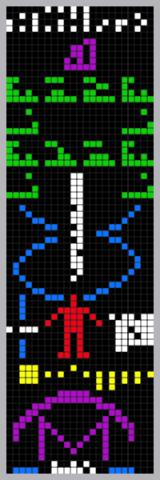Astronomy Data - Where is it stored ?
20 Dec 2015 20:18:38 UTC
Topic 198349
(moderation:
It struck me that there must be a very large amount of data from all the various telescopes.
There is also a lot of scientific papers published, which are based on that data.
So if someone in 10 years times wanted to review the raw data - could that be done?
Is it easy to find what observations exist given some search criteria?
Language
Copyright © 2025 Einstein@Home. All rights reserved.


Astronomy Data - Where is it stored ?
)
In generality it depends on who owns the instrument and which group is operating it for said data collection. These days it is almost always a collaboration/consortium that manages the process, but they in turn be governed by who funds them etc. They get first look and analysis obviously and thus be in the best position to grab the low hanging fruit. Typically after a couple of years the data may be more widely available, possibly only upon application and suitable agreement regarding things like attribution etc. If you are thinking of any one at all having access in a casual sense then the answer is rather more limited.
The latest I could find for LIGO ( who ultimately oversees E@H ) is this document. Note specifically section 1.3.2 "Public data release".
However the Large Synoptic Survey Telescope has public access built in to policy from the get go. It is very evo/revolutionary in its community approach to lots of things.
Cheers, Mike.
I have made this letter longer than usual because I lack the time to make it shorter ...
... and my other CPU is a Ryzen 5950X :-) Blaise Pascal
RE: RE: It struck me that
)
I was thinking in some way about what happens if Arecibo is closed, or for that matter any project which has finished.
A hypothetical researcher may want to go back to source data from an instrument. For example we find a pulsar, in 2016, is there a source to find which instruments have what data over the past 50 years which could be relevant- like a google for science data?
RE: I was thinking in some
)
It doesn't exist in that sense currently. That would be cool though.
Here's an odd passion that I have : I like to look at cloud or bubble chamber photos. These are the old fashioned way of doing particle physics before the age of solid state & microelectronics. The recorded tracks are on the cusp of scale b/w classical & quantum ie. they are not the particle but the response of the medium to the passage of the particle and the deposition of energy. I say this as much of our current thinking is based on this mental model of subatomic things. That makes LHC quite an amazing device. Experimenters in the 1940's and 50's would be stunned to hear that ATLAS for instance throws away far more data than it keeps.
Cheers, Mike.
I have made this letter longer than usual because I lack the time to make it shorter ...
... and my other CPU is a Ryzen 5950X :-) Blaise Pascal